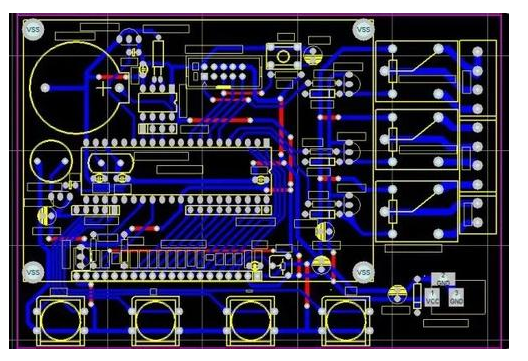The basic process of the photo-coating layer of FPC circuit board is the same as that of the photo-resist film for rigid printed boards. The materials used are also dry film type and liquid ink type. In fact, the solder mask dry film is still different from the liquid ink. Although the coating process of the dry film type and the liquid type are completely different, the same device can be used for the exposure and subsequent processes. Of course, the specific process conditions will be different. The dry film must be pasted first, and all the circuit diagrams are covered with dry film. The ordinary dry film method is likely to have air bubbles between the lines, so a vacuum filming machine is used.
Ink type is to use screen printing or spraying method to coat ink on the circuit pattern. Screen printing is the use of more coating methods, the same as the rigid printed board process. However, the thickness of the ink coated by a missed printing is relatively thin, basically 10 ~ 15um, due to the squareness of the circuit.

Orientation, the thickness of the ink in one printing is not uniform, and even skip printing occurs. In order to improve the reliability, the missing printing direction should be changed and then the second missing printing should be performed. The spraying method is a relatively new technology in the process of printed boards. The spraying thickness can be adjusted by the nozzle, and the adjustment range is also wide, the coating is uniform, there are almost no parts that can not be coated, and the coating can be continuously applied. For mass production.
The ink used for screen printing is epoxy resin and polyimide, both of which are two-components. Mix with curing agent before use. Add solvent to adjust viscosity as needed. Drying is required after printing. Double-sided lines can be lighted. After the coated side is temporarily dried, the other side is coated on the other side and temporarily dried, and then dried and cured after exposure and development.
The pattern exposure of the photocoating layer requires a positioning mechanism with a certain accuracy. If the size of the disk is about 100um, the position accuracy of the cover layer is at least 30-40 m. As discussed during the pattern exposure, if the mechanical capability of the device is guaranteed, this precision requirement can be achieved. However, after the flexible printed circuit board has been processed by multiple processes, it is difficult to meet higher requirements due to its own size expansion or partial deformation accuracy.
There are no major problems in the development process. The precise graphics should pay full attention to the development conditions. The developer and the resist pattern developer are both sodium carbonate aqueous solutions. Even in small batches of FPC production, avoid sharing the same developer with pattern development. In order to completely cure the developed photocoating layer resin, post-curing must also be performed. The curing temperature will vary depending on the resin, and it must be cured in an oven for 20-30 minutes.